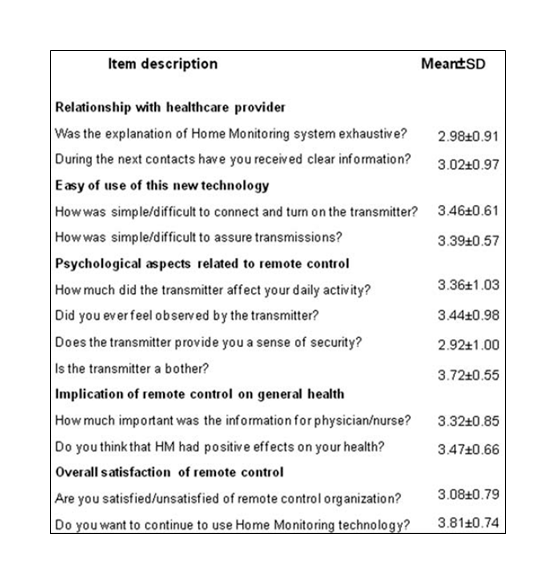Key Result
The mean total score of all items was 40.8 ± 5.4 (of a maximum score of 48) with a mean percentage of favourable answers of 96.3 ± 18.8% (CI 95.2 - 97.2%).

Figure 1: Score average and standard deviation for each item of the HoMASQ.
The ease of Home Monitoring use was ranked best: 99% of all respondents considered Home Monitoring technology easy to use.
97% of patients defined their relationship with the referring nurse and physician as positive, and over 95% of patients considered HM to have a positive implication on their general health. Regarding items on psychological aspects, 10% of the patients reported that this new technology influenced their daily activity, but only 5% of them considered the use of transmitter as a bother. For 92% of patients the transmitter conveyed a sense of security.
98% of patients were completely satisfied by remote monitoring and by how remote control healthcare service was organized.